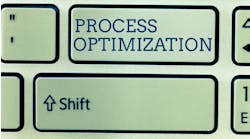How integration software fully empowers digital transformation
Venture capitalist Marc Andreessen was correct 12 years ago when he wrote, “Software is eating the world,” and that "more and more major businesses and industries are being run on software and delivered as online services.“ Now, most organizations operate with a firm reliance on software.
At manufacturing organizations, software traditionally enables initiatives including office productivity, predictive maintenance, enterprise resource planning (ERP) and analytics. Now, software serves as the unifier of such disparate systems through integration. Software also enables the important modern business initiative of digital transformation: digitalizing and integrating business processes to enable agility, rapid product development and optimal customer experiences to support ever-changing business conditions and requirements. Digital transformation facilitates and accelerates business pivots such as selling into new channels, moving into new geographies or markets, and enhancing customer experience.
Integration is the center of digital transformation
Integration software empowers digital transformation, because digital transformation initiatives invariably involve multiple inputs, systems, data sources and processes. Integration brings them together; the value of digital transformation initiatives is at the point of integration.
An example of digital transformation and integration in manufacturing is an electronics manufacturer in the United States, where customers buy its products from retailers including Amazon and Best Buy. The company needed a direct-to-consumer market motion in another country, so it established a web presence and a direct-to-consumer channel. The integration component is the centerpiece for passing transactions from the e-commerce system to the ERP and other back-office systems, and for analytics. This illustrates that digital-transformation initiatives in manufacturing aren't just about modernizing business processes and integrating legacy systems; they can support business pivots such as addressing new markets.
Enterprise integration report profiles the use of integration to support business objectives
To learn more about how organizations are prioritizing and implementing integration to support digital transformation and other business initiatives, we commissioned a survey of more than 1,000 American and Canadian CIOs, CTOs, developers and enterprise architects at companies with more than 500 employees in the manufacturing, finance and retail industries. The second-annual survey, summarized in the Digibee 2023 State of Enterprise Integration Report, confirms the importance of integration as an enabler of digital transformation and other initiatives. The number-one integration objective for all industries is digital transformation and cloud migration (29.9%), followed by improving time to market (29.7%), and enabling automation and artificial intelligence (29.1%).
For manufacturing organizations, security, reliability and governance topped the list of integration objectives (34%), followed by improved business analytics and decision-making (30%), and enabling automation and AI (29%). All are important initiatives that integration can support to improve transparency, insights and business agility.
Challenges with legacy systems in manufacturing
The second-largest integration challenge, after security (33%), that manufacturers identified in the survey is with legacy systems (32%). It's not surprising that manufacturers have that challenge as there is a lot of legacy technology that is not cloud-native in manufacturing organizations.
In addition to legacy information systems, legacy technologies in manufacturing include embedded systems that run production machines, which present a level of challenge and complexity that other industries don't have. This involves monitoring machine usage and predictive maintenance of very expensive capital goods. Integration can provide transparency to monitor all equipment, systems, processes and integrations in a single dashboard, and anticipate challenges in maintenance and operation.
Challenges with IT backlog in manufacturing
The report also indicates that 60% of IT backlog projects in manufacturing require integration support. This is not surprising, because most IT implementations require some level of integration support, unless they’re for a small process.
Since integration is a key component of reducing IT backlogs, manufacturing organizations need to devote more resources to integration. This may include enabling low-code and no-code development, which can increase the number of integration developers from a few specialists to any number of in-house or consultant developers across a variety of skill sets.
Gartner summarized the opportunities for manufacturers this year, stating, “Manufacturing CIOs’ priorities have changed due to post-pandemic recovery, socio-economic uncertainties, and supply chain shortages. Although this could be seen as doom and gloom to manufacturers in 2023, they have a great opportunity to create new revenue streams unseen since the industrial revolution.”



